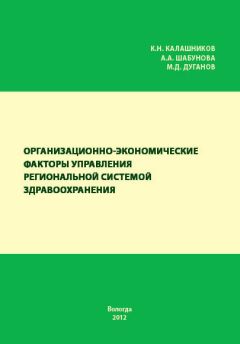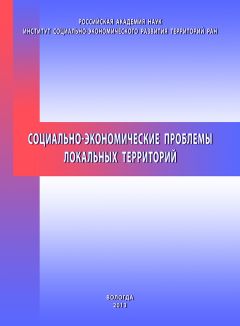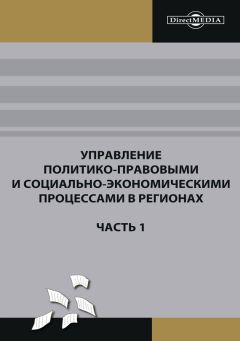Леонард Млодинов - (Не)совершенная случайность. Как случай управляет нашей жизнью
153
U.S. Department of Transportation, Federal Highway Administration, «Licensed Drivers, Vehicle Registrations and Resident Population»;
http://www.fhwa.dot.gov/policy/ohim/hs03/htm/dlchrt.htm.
154
U.S. Department of Transportation, Research and Innovative Technology Administration, Bureau of Transportation Statistics, «Motor Vehicle Safety Data»,
http://www.bts.gov/publications/national_transportation_statistics/2002/html/table_02_17.html.
155
«The Domesday Book», History Magazine, October/November 2001.
156
For Graunt's story, see Hacking, The Emergence of Probability, pp. 103-9; David, Gods, Games and Gambling, pp. 98-109; and Newman, The World of Mathematics, 3:1416-18.
157
Hacking, The Emergence of Probability, p. 102.
158
Theodore Porter, The Rise of Statistical Thinking, p. 19.
159
For Graunt's original table, see Hacking, The Emergence of Probability, p. 108. For the current data, see World Health Organization, «Life Tables for WHO Member States», http://www.who.int/whosis/database/life_tables/life_tables.cfm. The figures quoted were taken from abridged tables and rounded.
160
Ian Hacking, The Taming of Chance (Cambridge: Cambridge University Press, 1990), p. vii.
161
H. A. David, «First (?) Occurrence of Common Terms in Statistics and Probability», in Annotated Readings in the History of Statistics, ed. H. A. David and A.W.F. Edwards (New York: Springer, 2001), appendix В and pp. 219-28.
162
Noah Webster, American Dictionary of the English language (1828; — facsimile of the 1st ed., Chesapeake, Va.: Foundation for American Christian Education, 1967).
163
The material on Quetelet is drawn mainly from Stigler, The History of Statistics, pp. 161–220; Stephen Stigler, Statistics on the Table: The History of Statistical Concepts and Methods (Cambridge, Mass.: Harvard University Press, 1999), pp. 51–66; and Theodore Porter, The Rise of Statistical Thinking, pp. 100-9.
164
Louis Menand, The Metaphysical Club (New York: Farrar, Straus & Giroux, 2001), p. 187.
165
Holland, What Are the Chances? pp. 41–42.
166
David Yermack, «Good Timing: CEO Stock Option Awards and Company News Announcements», Journal of Finance 52, no. 2 (June 1997): 449-76; and Erik Lie, «On the Timing of CEO Stock Option Awards», Management Science 51, no. 5 (May 2005): 802-12. See also Charles Forelle and James Bandler, «The Perfect Payday-Some CEOs Reap Millions by Landing Stock Options When They Are Most Valuable: Luck-or Something Else?» Wall Street Journal, March 18, 2006.
167
Justin Wolfers, «Point Shaving: Corruption in NCAA Basketball», American Economic Review 96, no. 2 (May 2006): 279-83.
168
Stern, «On the Probability of Winning a Football Game.»
169
David Leonhardt, «Sad Suspicions about Scores in Basketball», New York Times, March 8, 2006.
170
Richard C. Hollinger et al., National Retail Security Survey: Final Report (Gainesville: Security Research Project, Department of Sociology and Center for Studies in Criminal Law, University of Florida, 2002–2006).
171
Adolphe Quetelet, quoted in Theodore Porter, The Rise of Statistical Thinking, p. 54.
172
Quetelet, quoted in Menand, The Metaphysical Club, p. 187.
173
Jeffrey Kluger, «Why We Worry about the Things We Shouldn't.. and Ignore the Things We Should», Time, December 4, 2006, pp. 65–71.
174
Gerd Gigerenzer, Empire of Chance: How Probability Changed Science and Everyday Life (Cambridge: Cambridge University Press, 1989), p. 129.
175
Menand, The Metaphysical Club, p. 193.
176
De Vany, Hollywood Economics; see part IV, «A Business of Extremes.»
177
See Derek William Forrest, Francis Galton: The Life and Work of a Victorian Genius (New York: Taplinger, 1974); Jeffrey M. Stanton, «Galton, Pearson, and the Peas: A Brief History of Linear Regression for Statistics Instructors», Journal of Statistics Education 9, no. 3 (2001); and Theodore Porter, The Rise of Statistical Thinking, pp. 129-46.
178
Francis Galton, quoted in Theodore Porter, The Rise of Statistical Thinking, p. 130.
179
Peter Doskoch, «The Winning Edge», Psychology Today, November/ December 2005, pp. 44–52.
180
Deborah J. Bennett, Randomness (Cambridge, Mass.: Harvard University Press, 1998), p. 123.
181
Abraham Pais, The Science and Life of Albert Einstein (London: Oxford University Press, 1982), p. 17; see also the discussion on p. 89.
182
On Brown and the history of Brownian motion, see D.J. Mabberley, Jupiter Botanicus: Robert Brown of the British Museum (Braunschweig, Germany, and London: Verlag von J. Cramer / Natural History Museum, 1985); Brian J. Ford, «Brownian Movement in Clarkia Pollen: A Reprise of the First Observations», Microscope 40, no. 4 (1992): 235-41; and Stephen Brush, «A History of Random Processes. I. Brownian Movement from Brown to Perrin», Archive for History of Exact Sciences 5, no. 34 (1968).
183
Pais, Albert Einstein, pp. 88-100.
184
Albert Einstein, quoted in Ronald William Clark, Einstein: The Life and Times (New York: HarperCollins, 1984), p. 77.
185
See Arthur Conan Doyle, The History of Spiritualism (New York: G. H. Doran, 1926); and R. L. Moore, In Search of White Crows: Spiritualism, Parapsychology, and American Culture (London: Oxford University Press, 1977).
186
Ray Hyman, «Parapsychological Research: A Tutorial Review and Critical Appraisal», Proceedings of the IEEE 74, no. 6 (June 1986): 823-49.
187
Michael Faraday, «Experimental Investigation of Table-Moving», Athenaeum, July 2, 1853, pp. 801-3.
188
Michael Faraday, quoted in Hyman, «Parapsychological Research», p. 826.
189
Faraday, quoted ibid.
190
See Frank H. Durgin, «The Tinkerbell Effect: Motion Perception and Illusion», Journal of Consciousness Studies 9, nos. 5–6 (May-June 2002): 88-101.
191
Christof Koch, The Quest for Consciousness: A Neurobiological Approach (Englewood, Colo.: Roberts, 2004), pp. 51–54.
192
The study was D. O. Clegg et al., «Glucosamine, Chondroitin Sulfate, and the Two in Combination for Painful Knee Osteoarthritis», New England Journal of Medicine 354, no. 8 (February 2006): 795–808. The interview was «Slate's Medical Examiner: Doubts on Supplements», Day to Day, NPR broadcast, March 13, 2006.
193
See Paul Slovic, Howard Kunreuther, and Gilbert F. White, «Decision Processes, Rationality, and Adjustment to Natural Hazards», in Natural Hazards: Local, National, and Global, ed. G. F White (London: Oxford University Press, 1974); see also Willem A. Wagenaar, «Generation of Random Sequences by Human Subjects: A Critical Survey of Literature», Psychological Bulletin 77, no. 1 (January 1972): 65–72.
194
See Hastie and Dawes, Rational Choice in an Uncertain World, pp. 19–23.
195
George Spencer-Brown, Probability and Scientific Inference (London: Longmans, Green, 1957), pp. 55–56. Actually, 10 is a gross underestimate.
196
Janet Maslin, «His Heart Belongs to (Adorable) iPod», New York Times, October 19, 2006.
197
Hans Reichenbach, The Theory of Probability, trans. E. Hutton and M. Reichenbach (Berkeley: University of California Press, 1934).
198
The classic text expounding this point of view is Burton G. Malkiel, A Random Walk Down Wall Street, now completely revised in an updated 8th ed. (New York: W. W. Norton, 2003).
199
John R. Nofsinger, Investment Blunders of the Rich and Famous — and What You Can Learn from Them (Upper Saddle River, N.J.: Prentice Hall, Financial Times, 2002), p. 62.
200
Hemang Desai and Prem C. Jain, «An Analysis of the Recommendations of the 'Superstar' Money Managers at Barron's Annual Roundtable», Journal of Finance 50, no. 4 (September 1995): 1257-73.
201
Jess Beltz and Robert Jennings, «Wall $treet Week with Rukeyser's Recommendations: Trading Activity and Performance», Review of Financial Economics 6, no. 1 (1997): 15–27; and Robert A. Pari, «Wall $treet Week Recommendations: Yes or No?» Journal of Portfolio Management 14, no. 1 (1987): 74–76.
202
Andrew Metrick, «Performance Evaluation with Transactions Data: The Stock Selection of Investment Newsletters», Journal of Finance 54, no. 5 (October 1999): 1743-75; and «The Equity Performance of Investment Newsletters» (discussion paper no. 1805, Harvard Institute of Economic Research, Cambridge, Mass., November 1997).
203
James J. Choi, David Laibson, and Brigitte Madrian, «Why Does the Law of One Price Fail? An Experiment on Index Mutual Funds» (working paper no. W12261, National Bureau of Economic Research, Cambridge, Mass., May 4, 2006).
204
Leonard Koppett, «Carrying Statistics to Extremes», Sporting News, February 11, 1978.
205
By some definitions, Koppett's system would be judged to have failed in 1970; by others, to have passed. See CHANCE News 13.04, April 18, 2004-June 7, 2004,
http://www.dartmouth.edu/~chance/chance_news/recent_news/chance_news_13.04.html.
206
As touted on the Legg Mason Capital Management Web site,
http://www.leggmasoncapmgmt.com/awards.htm.
207
Lisa Gibbs, «Miller: He Did It Again», CNNMoney, January 11, 2004,
http://money.cnn.com/2004/01/07/funds/ultimateguide_billmiller_0204.
208
Thomas R. Gilovich, Robert Vallone, and Amos Tversky, «The Hot Hand in Basketball: On the Misperception of Random Sequences», Cognitive Psychology 17, no. 3 (July 1985): 295–314.
209
Purcell's research is discussed in Gould, «The Streak of Streaks.»
210
Mark Hulbert, «Not All Stocks Are Created Equal», www.MarketWatch.com, January 18, 2005, accessed March 2005 (site now discontinued).
211
Kunal Kapoor, «A Look at Who's Chasing Bill Miller's Streak», Morningstar, December 30, 2004, http://www.morningstar.com.
212
Michael Mauboussin and Kristen Bartholdson, «On Streaks: Perception, Probability, and Skill», Consilient Observer (Credit Suisse-First Boston) 2, no. 8 (April 22, 2003).
213
Merton Miller on «Trillion Dollar Bet», NOVA, PBS broadcast, February 8, 2000.
214
R.D. Clarke, «An Application of the Poisson Distribution», Journal of the Institute of Actuaries 72 (1946): 48
215
Atul Gawande, «The Cancer Cluster Myth», The New Yorker, February 28,1998, pp. 34–37.
216
Ibid.
217
Bruno Bettelheim, «Individual and Mass Behavior in Extreme Situations», Journal of Abnormal and Social Psychology 38 (1943): 417-52.
218
Curt P. Richter, «On the Phenomenon of Sudden Death in Animals and Man», Psychosomatic Medicine 19 (1957): 191-98.
219
E. Stotland and A. Blumenthal, «The Reduction of Anxiety as a Result of the Expectation of Making a Choice», Canadian Review of Psychology 18 (1964): 139-45.




